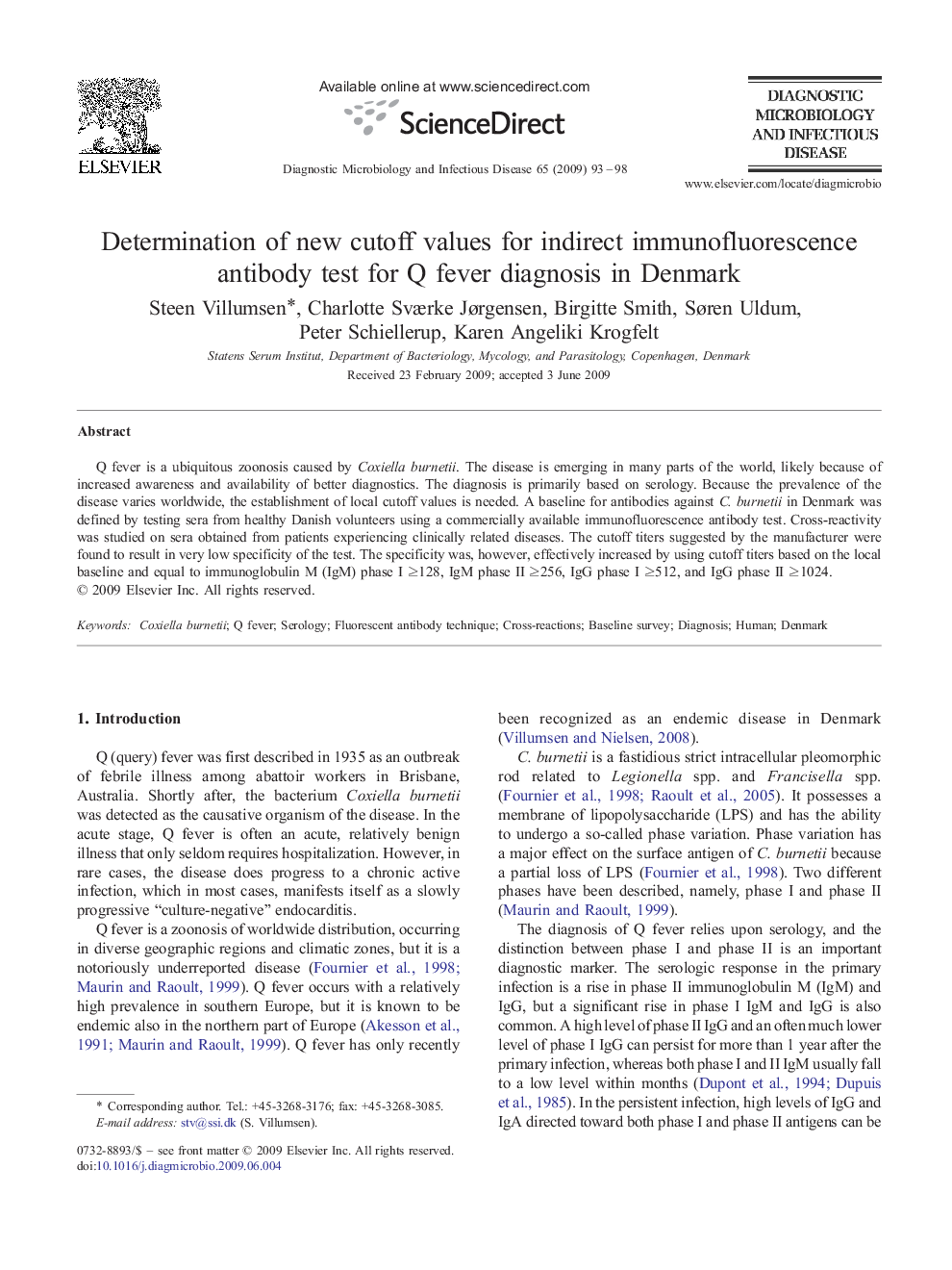| Article ID | Journal | Published Year | Pages | File Type |
|---|---|---|---|---|
| 3347761 | Diagnostic Microbiology and Infectious Disease | 2009 | 6 Pages |
Q fever is a ubiquitous zoonosis caused by Coxiella burnetii. The disease is emerging in many parts of the world, likely because of increased awareness and availability of better diagnostics. The diagnosis is primarily based on serology. Because the prevalence of the disease varies worldwide, the establishment of local cutoff values is needed. A baseline for antibodies against C. burnetii in Denmark was defined by testing sera from healthy Danish volunteers using a commercially available immunofluorescence antibody test. Cross-reactivity was studied on sera obtained from patients experiencing clinically related diseases. The cutoff titers suggested by the manufacturer were found to result in very low specificity of the test. The specificity was, however, effectively increased by using cutoff titers based on the local baseline and equal to immunoglobulin M (IgM) phase I ≥128, IgM phase II ≥256, IgG phase I ≥512, and IgG phase II ≥1024.
